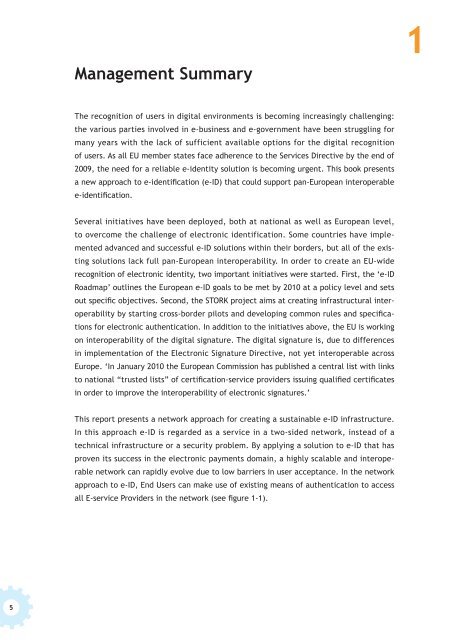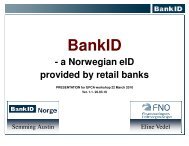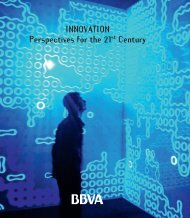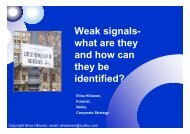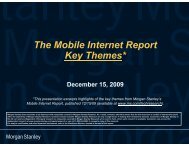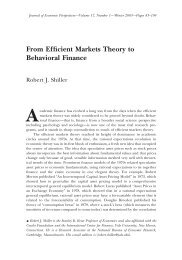A Network Approach to E-identification
A Network Approach to E-identification
A Network Approach to E-identification
- No tags were found...
Create successful ePaper yourself
Turn your PDF publications into a flip-book with our unique Google optimized e-Paper software.
1<br />
Management Summary<br />
The recognition of users in digital environments is becoming increasingly challenging:<br />
the various parties involved in e-business and e-government have been struggling for<br />
many years with the lack of sufficient available options for the digital recognition<br />
of users. As all EU member states face adherence <strong>to</strong> the Services Directive by the end of<br />
2009, the need for a reliable e-identity solution is becoming urgent. This book presents<br />
a new approach <strong>to</strong> e-<strong>identification</strong> (e-ID) that could support pan-European interoperable<br />
e-<strong>identification</strong>.<br />
Several initiatives have been deployed, both at national as well as European level,<br />
<strong>to</strong> overcome the challenge of electronic <strong>identification</strong>. Some countries have implemented<br />
advanced and successful e-ID solutions within their borders, but all of the existing<br />
solutions lack full pan-European interoperability. In order <strong>to</strong> create an EU-wide<br />
recognition of electronic identity, two important initiatives were started. First, the ‘e-ID<br />
Roadmap’ outlines the European e-ID goals <strong>to</strong> be met by 2010 at a policy level and sets<br />
out specific objectives. Second, the STORK project aims at creating infrastructural interoperability<br />
by starting cross-border pilots and developing common rules and specifications<br />
for electronic authentication. In addition <strong>to</strong> the initiatives above, the EU is working<br />
on interoperability of the digital signature. The digital signature is, due <strong>to</strong> differences<br />
in implementation of the Electronic Signature Directive, not yet interoperable across<br />
Europe. ‘In January 2010 the European Commission has published a central list with links<br />
<strong>to</strong> national “trusted lists” of certification-service providers issuing qualified certificates<br />
in order <strong>to</strong> improve the interoperability of electronic signatures.’<br />
This report presents a network approach for creating a sustainable e-ID infrastructure.<br />
In this approach e-ID is regarded as a service in a two-sided network, instead of a<br />
technical infrastructure or a security problem. By applying a solution <strong>to</strong> e-ID that has<br />
proven its success in the electronic payments domain, a highly scalable and interoperable<br />
network can rapidly evolve due <strong>to</strong> low barriers in user acceptance. In the network<br />
approach <strong>to</strong> e-ID, End Users can make use of existing means of authentication <strong>to</strong> access<br />
all E-service Providers in the network (see figure 1-1).<br />
5


